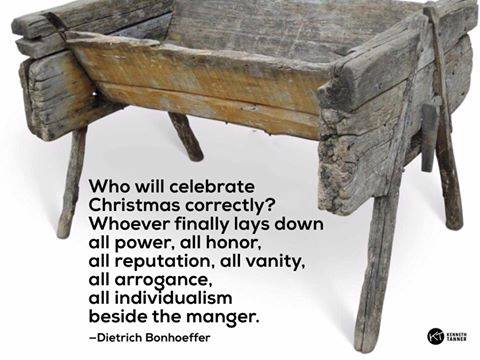Click to join the conversation with over 500,000 Pentecostal believers and scholars
Click to get our FREE MOBILE APP and stay connected
| PentecostalTheology.com



The Bible tells us that God so loved the world, He gave us His only Son. What a marvelous gift! It’s no wonder that Christmas is such a joyous celebration. God sent Jesus, our Savior, to be born in Bethlehem. He is Immanuel—God with us.
To add greater meaning and joy to your holidays, we’ve just released our newest DVD production, Christmas: The Story Behind the Traditions. This inspiring video takes you around the world to discover the history of the holiday, from the birth of Jesus to our modern-day celebrations. I think it will bring you a deeper insight into the customs and traditions that you and your family enjoy. It’s our thank you when you send a gift to help those in need this season.
Merry Christmas! God bless you, and may He fill your heart and home with His joy and peace.
Yours in Christ,
Gordon Robertson
Discover the meaning behind your favorite holiday traditions and experience a timeless Christmas classic!
This holiday season, CBN is delighted to present a wonderful Christmas DVD and CD gift exclusively for you.
Hosted by Gordon Robertson and filmed in eight countries, Christmas: The Story Behind the Traditions takes you around the world to discover the history of Christmas and the meaning behind the traditions you love to celebrate.
You can add greater meaning to your holiday as you learn:
- Why December 25th is the historical birthdate of Jesus
- What is the symbolism behind Christmas trees and stockings?
- How did the tradition of gift-giving begin?
- And, much more…
| ORDER NOW → |
Plus, exclusively for you:
Now you can enjoy one of the best-loved Christmas stories of all time: A Christmas Carol,
abridged for CBN and read by Pat Robertson. Pat has recorded an
incredible holiday treasure for you. Enjoy listening to this Christmas
classic with your family and friends. It’s a story loved by young and
old alike!
Get Christmas: The Story Behind the Traditions and an exclusive recording of A Christmas Carol read by Pat Robertson—our thank you to you for your gift of $25 or more to CBN.
Your gift will help bring joy to the world this season by feeding the hungry, helping to heal the sick, providing clean water to the thirsty, and most importantly, sharing the Gospel with the lost.




Varnel Watson
right on on the true Christmas story Werner Keller’s book The Bible as History the following admission: “December 25 is referred to in documents as Christmas Day in A.D. 324 for the first time. Under the Roman emperor Justinian [A.D. 527-565] it was recognized as an official holiday. An old Roman festival played a a major part in the choice of this particular day. December 25 in ancient Rome was the ‘Dies Natali Invictus,’ ‘the birthday of the unconquered,’ the day of the winter solstice and at the same time, in Rome, the last day of the Saturnalia, which had long since degenerated into a week of unbridled carnival…” (p. 331).
Keller goes on: “Meteorologists as well as historians and astronomers have something of importance to contribute to this question of fixing the date of the birth of Jesus. According to St. Luke: ‘And there were in the same country shepherds abiding in the field, keeping watch over their flock by night’ (Luke 2:8).
“Meteorologists have made exact recordings of the temperature at Hebron. This spot in the southern highlands of Judah exhibits the same climatic conditions as Bethlehem, which is not far distant. The temperature readings show over a period of three months that the incidence of frost is as follows: December — 2.8 degrees; January — 1.6 degrees; February —0.1 degrees. The first two months have also the greatest rainfall in the year: approximately 6 inches in December, and nearly 8 inches in January. According to all existing information the climate of Palestine has not changed appreciably in the last 2,000 years, consequently modern meteorological observations can be taken as a basis. At Christmas-time Bethlehem is in the grip of frost, and in the Promised Land no cattle would have been in the fields in that temperature. This fact is born out by a remark in the Talmud to the effect that in that neighborhood the flocks were put out to grass in March and brought in again at the beginning of November. They remained out in the open for almost eight months. Around Christmas-time nowadays both animals and shepherds are under cover in Palestine. What St. Luke tells us points therefore to the birth of Jesus having taken place BEFORE the onset of winter…” (p. 331-332).